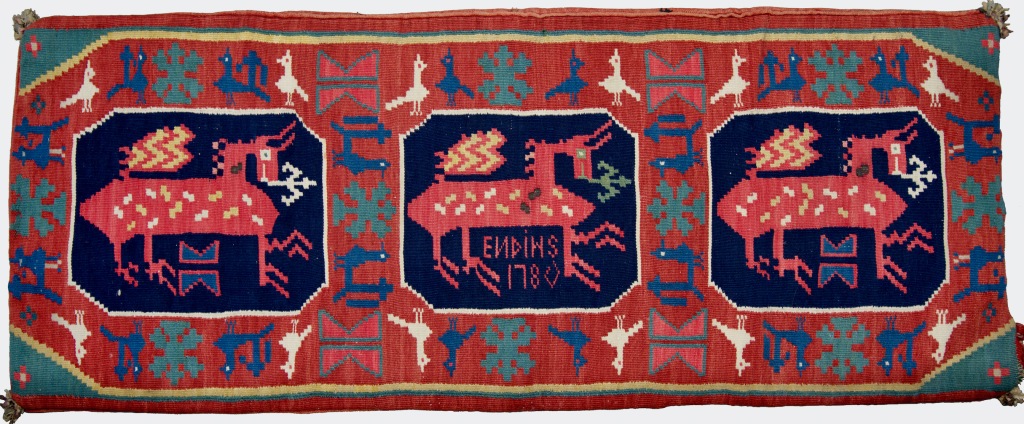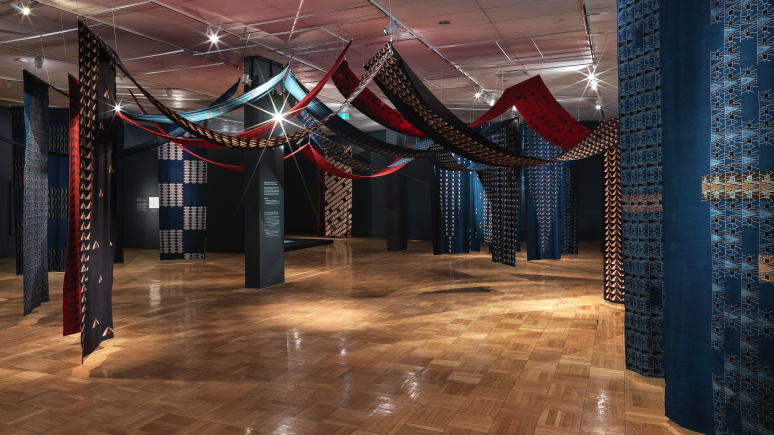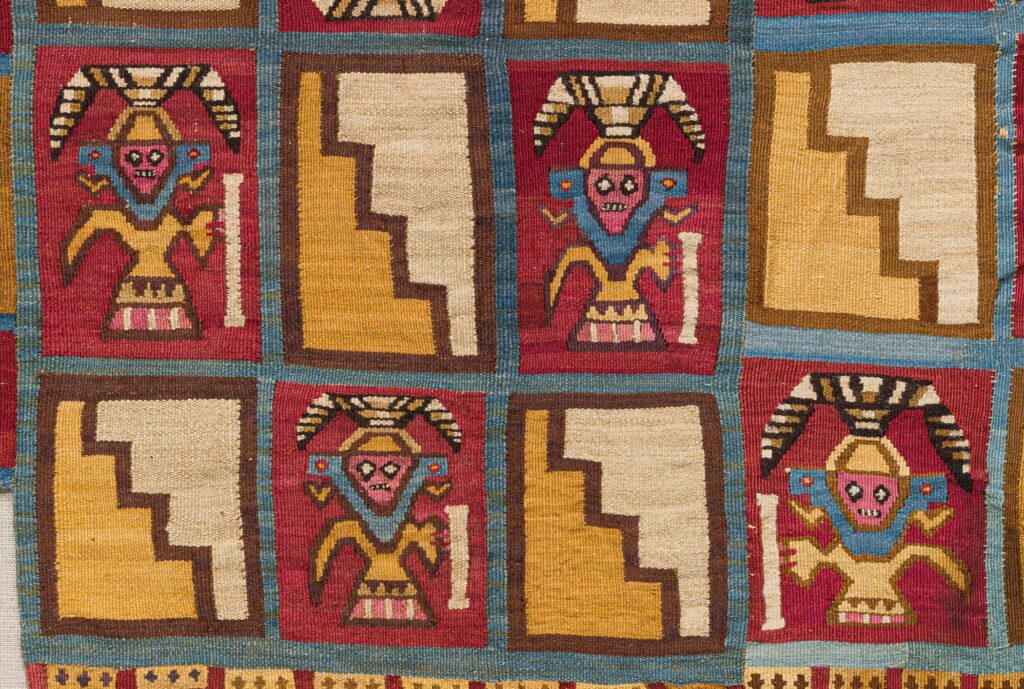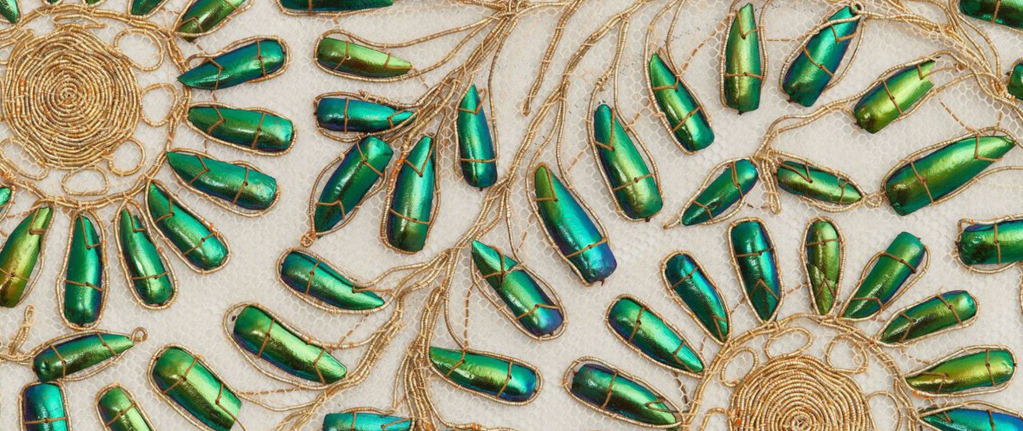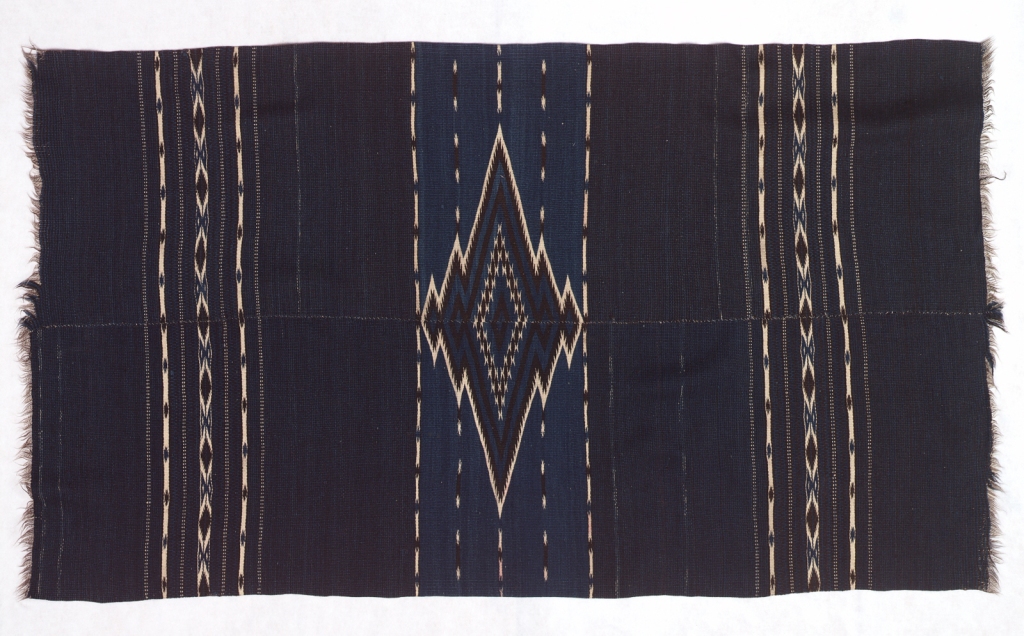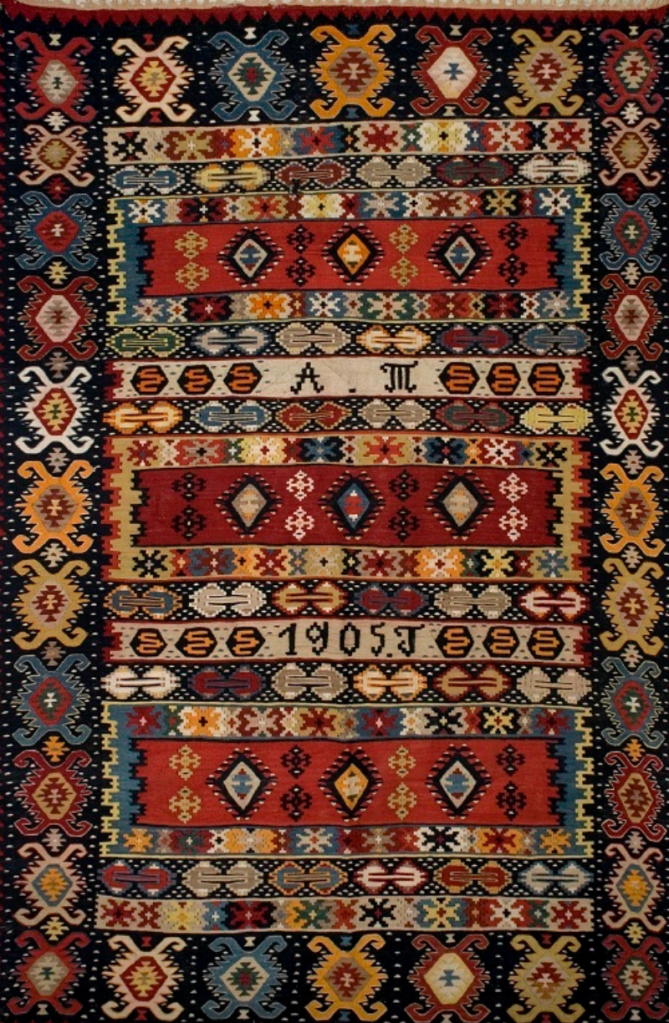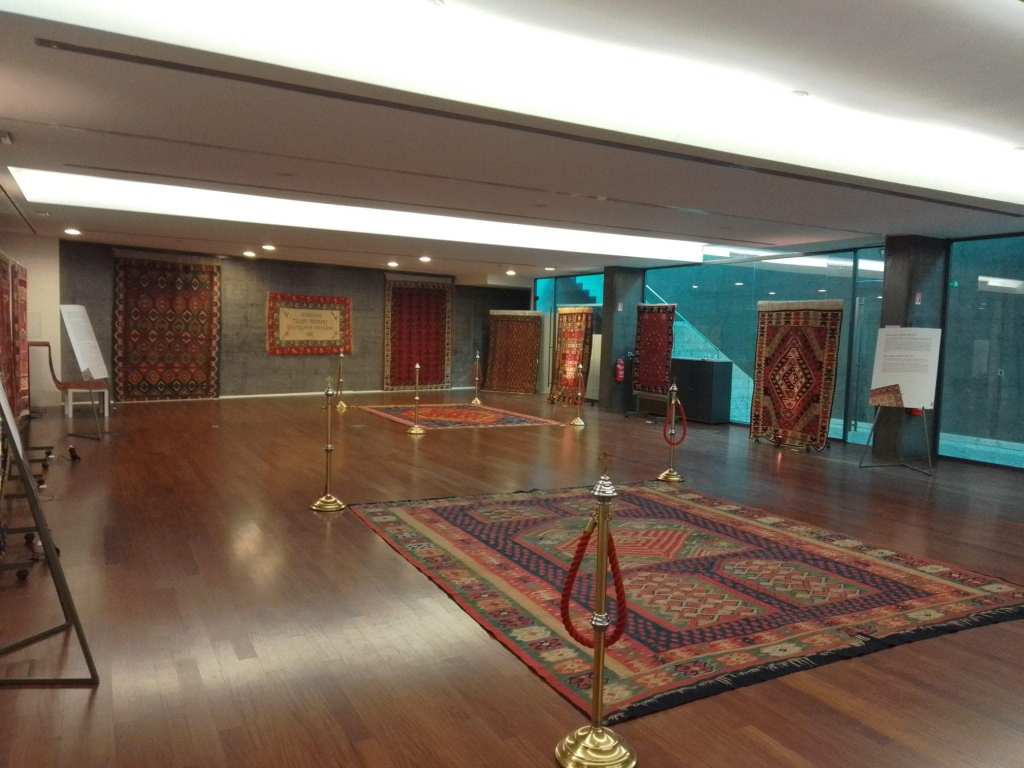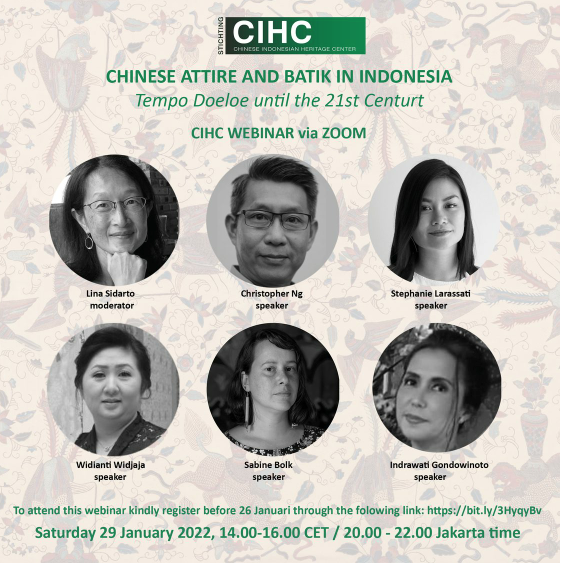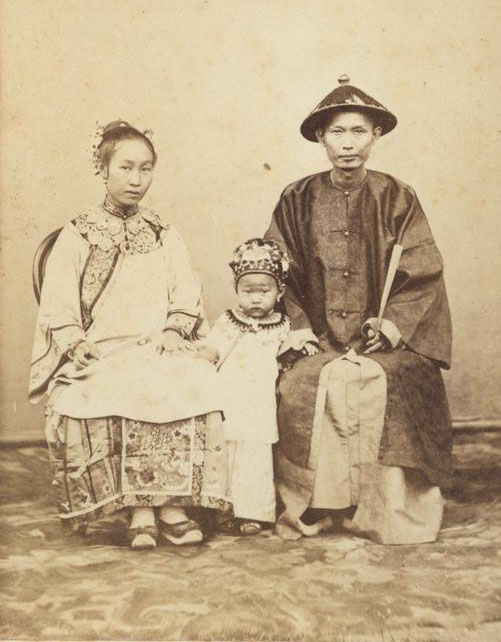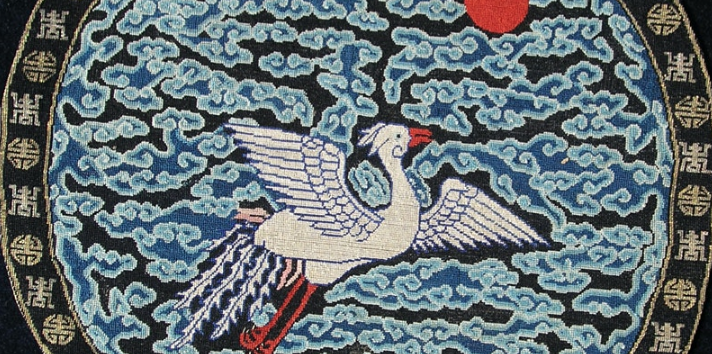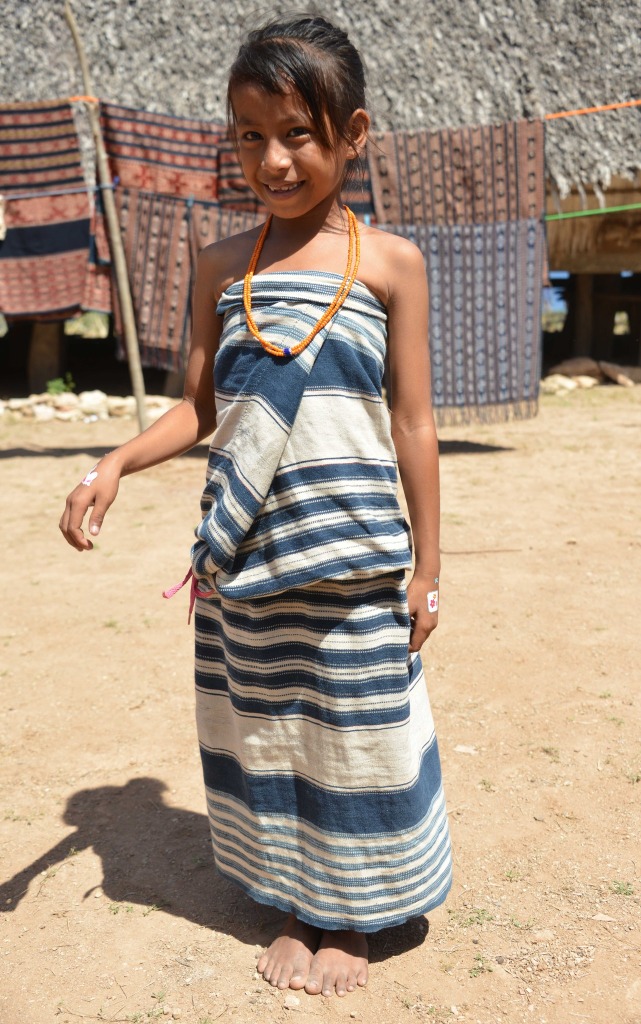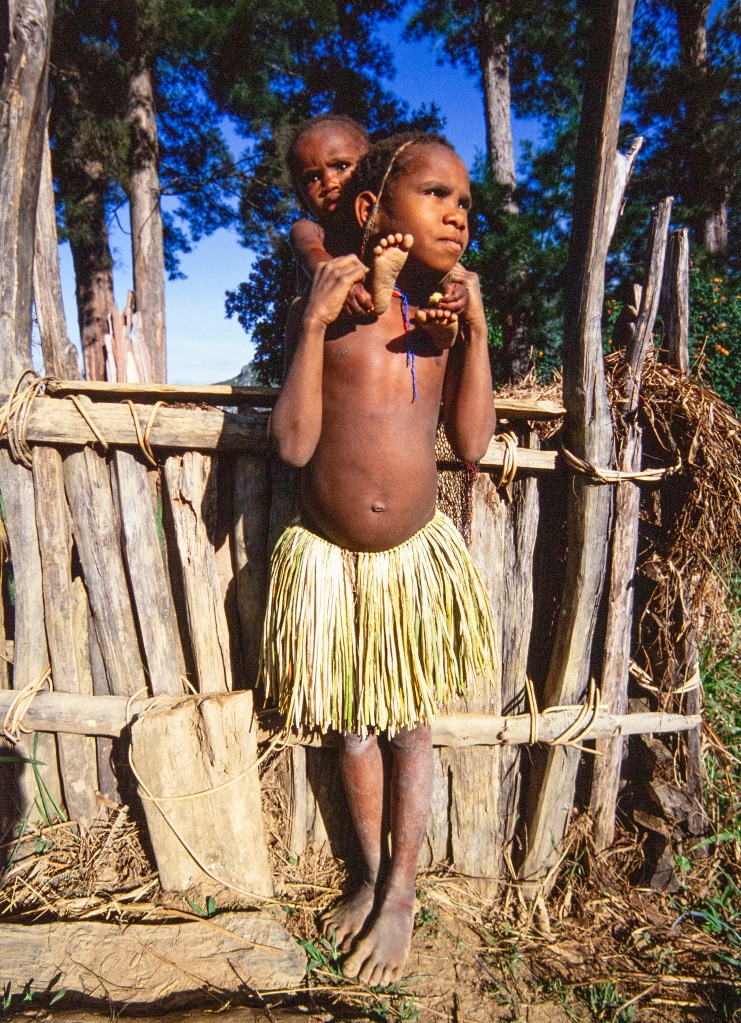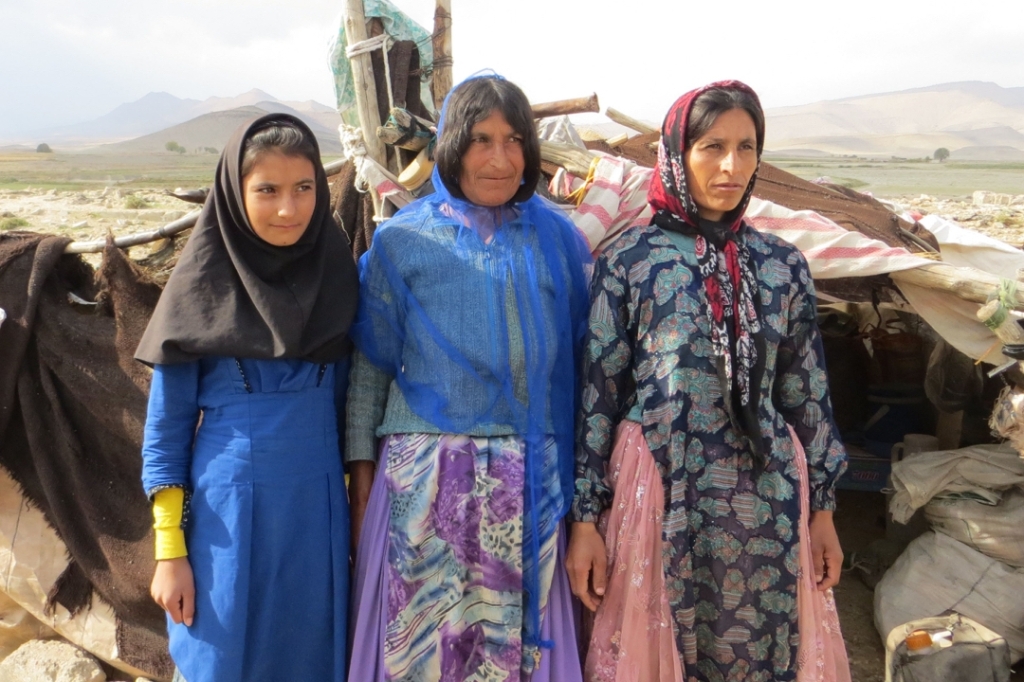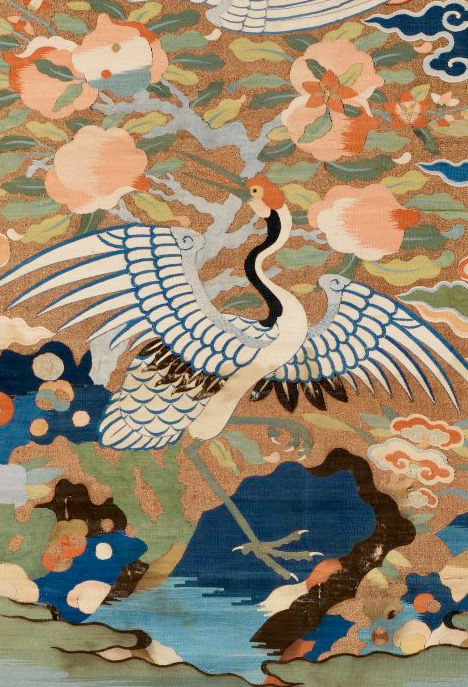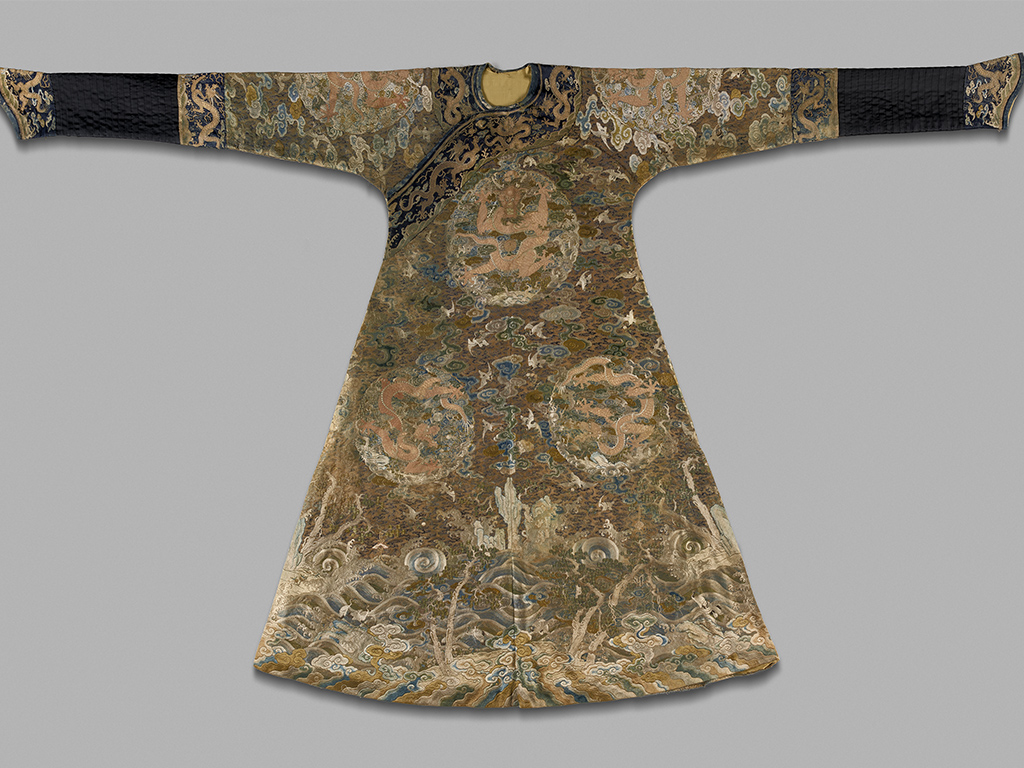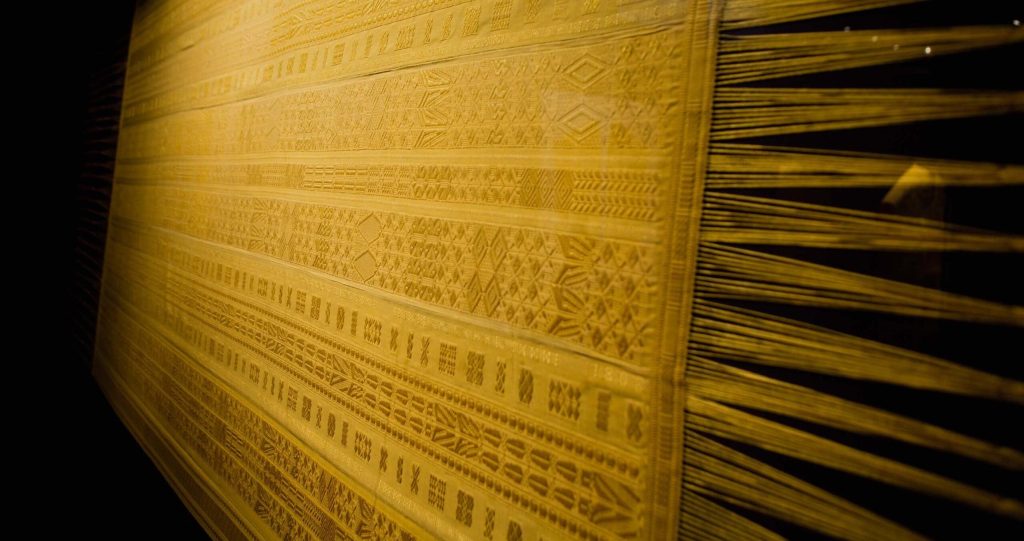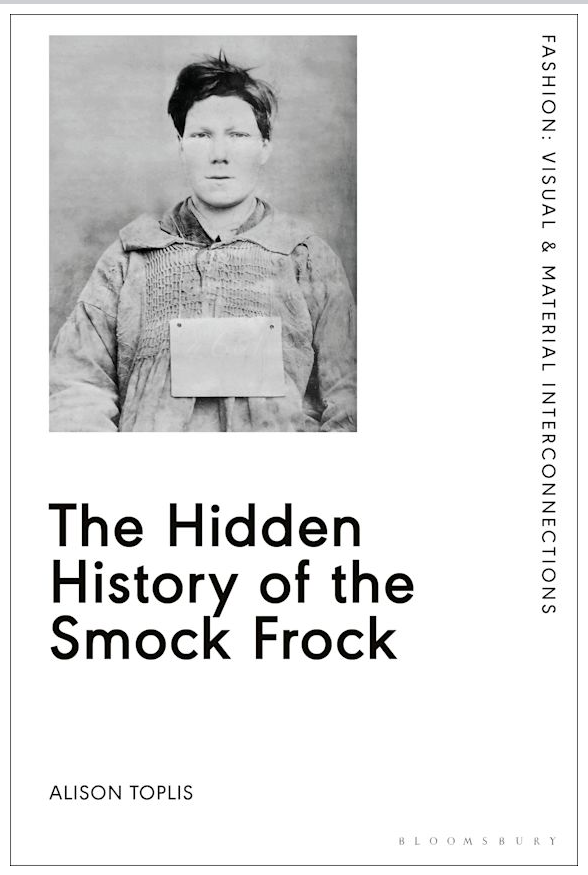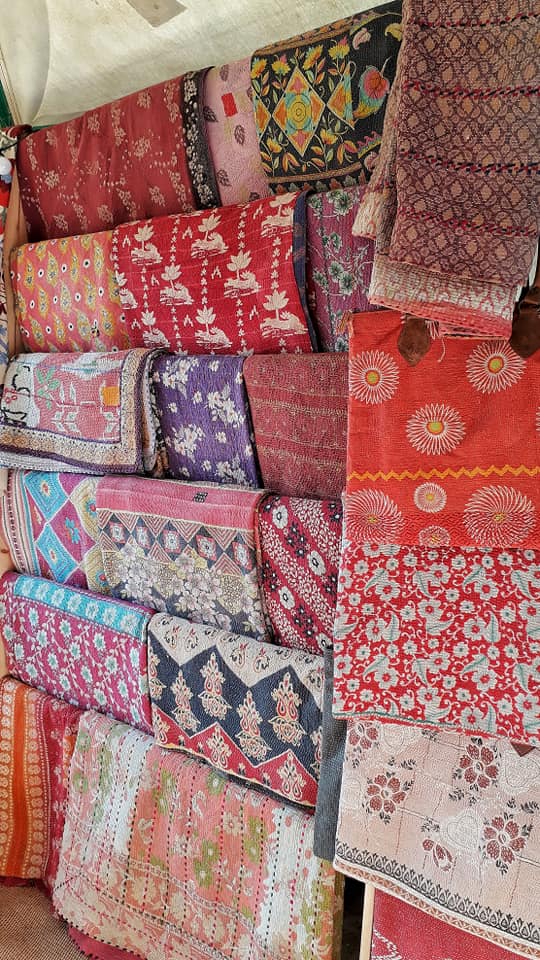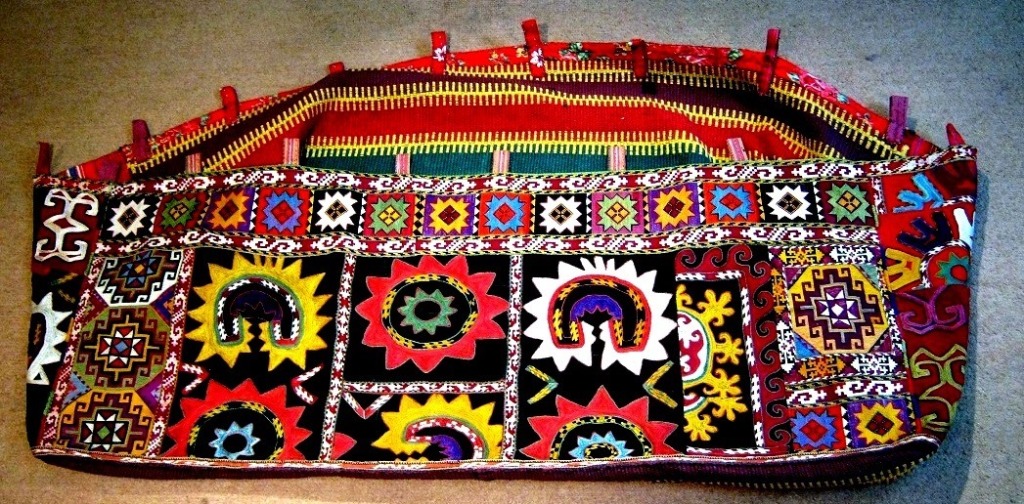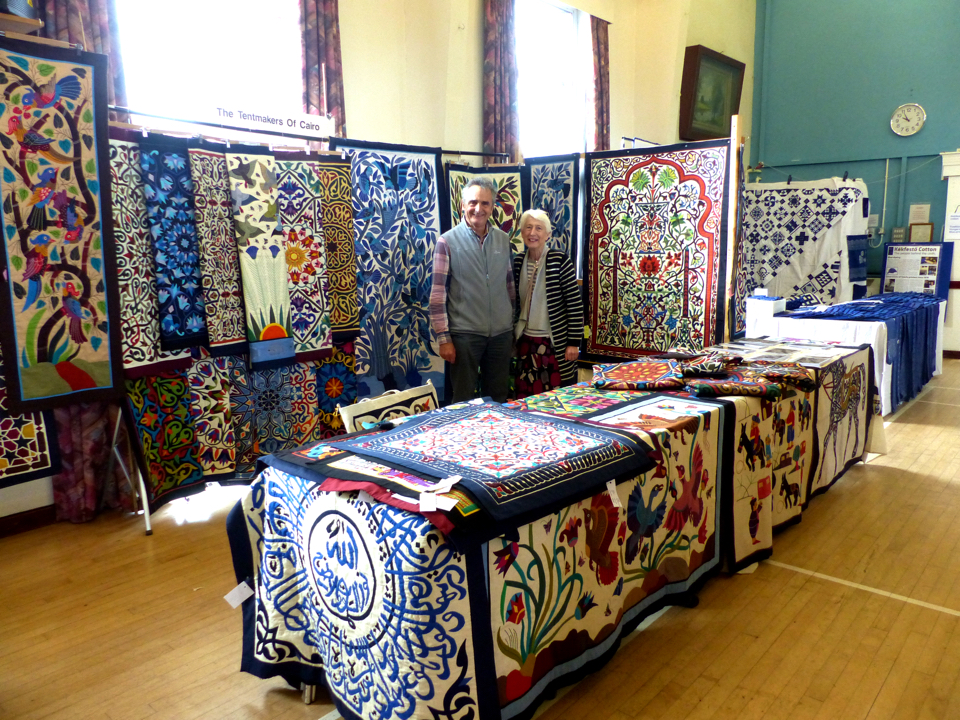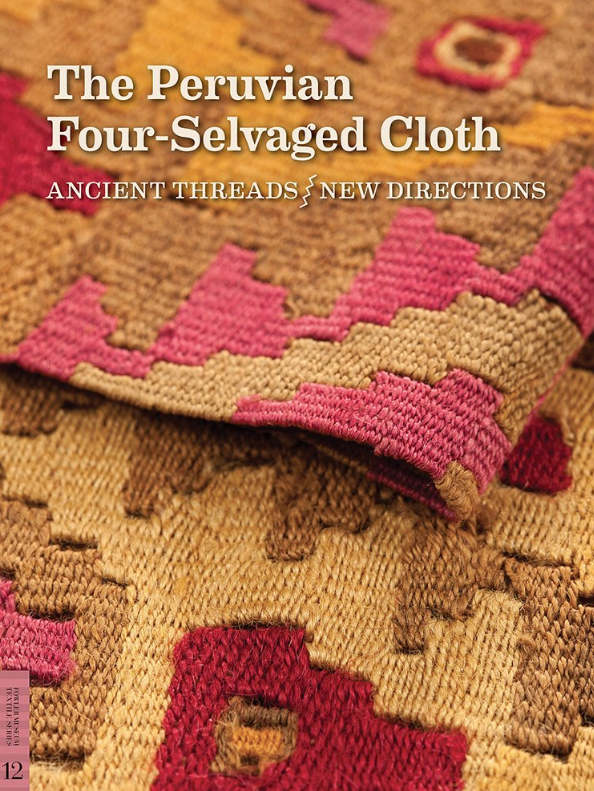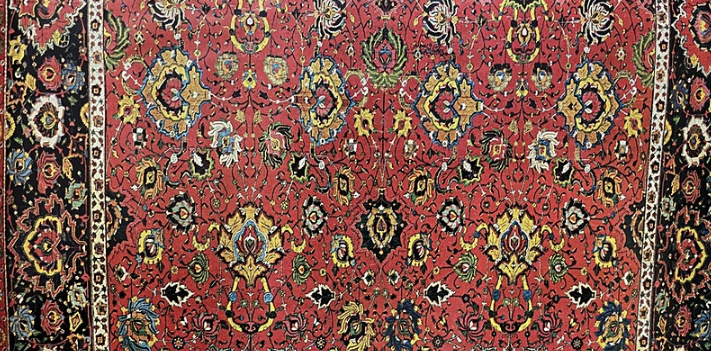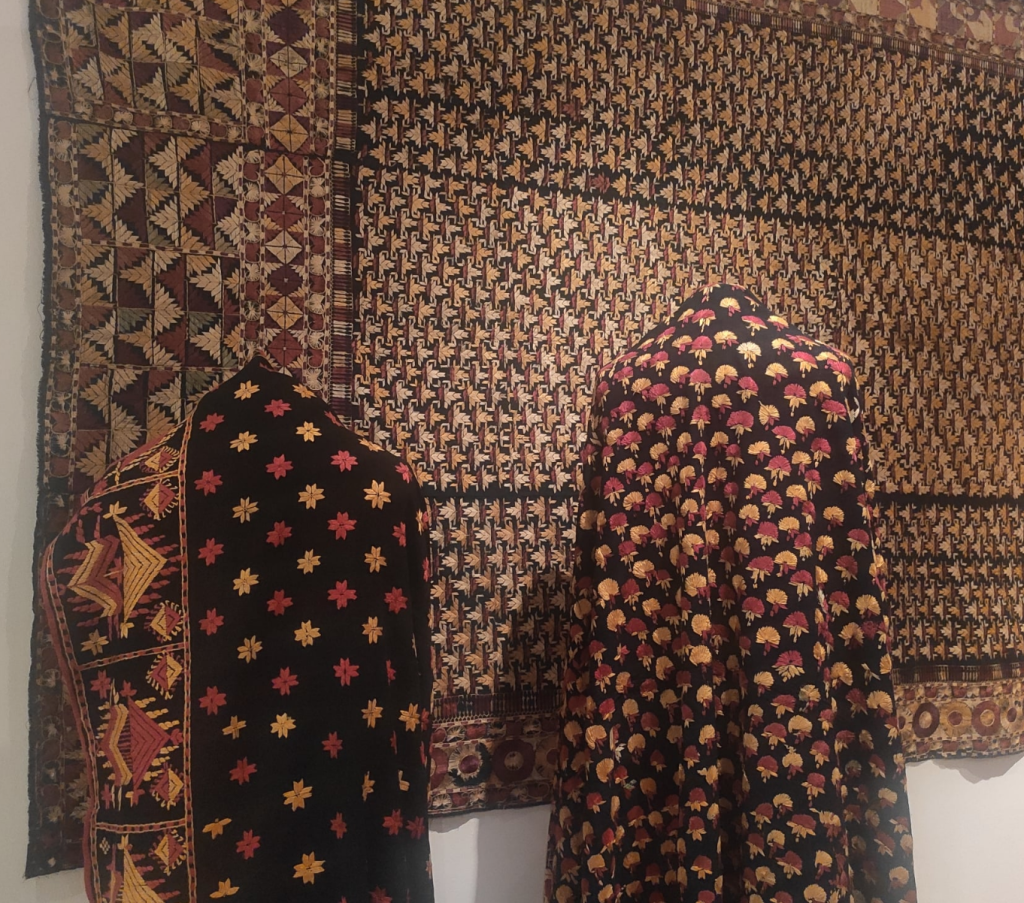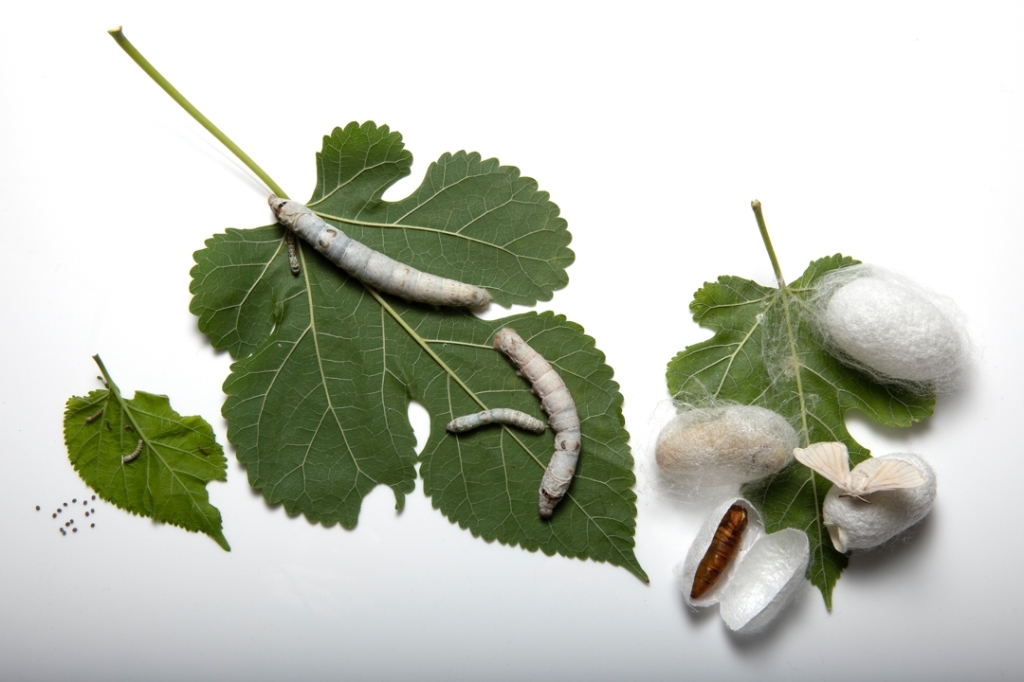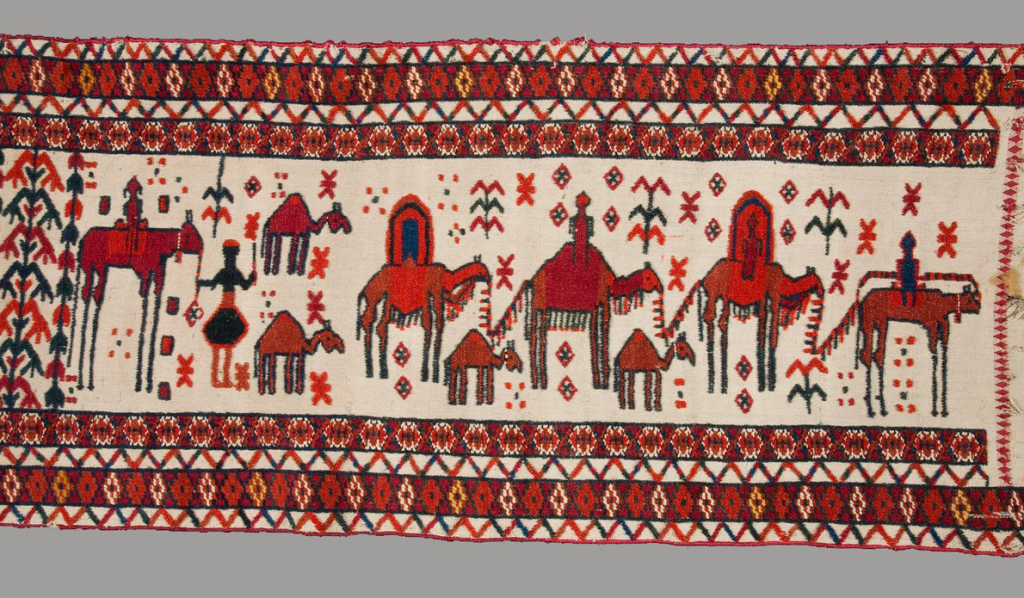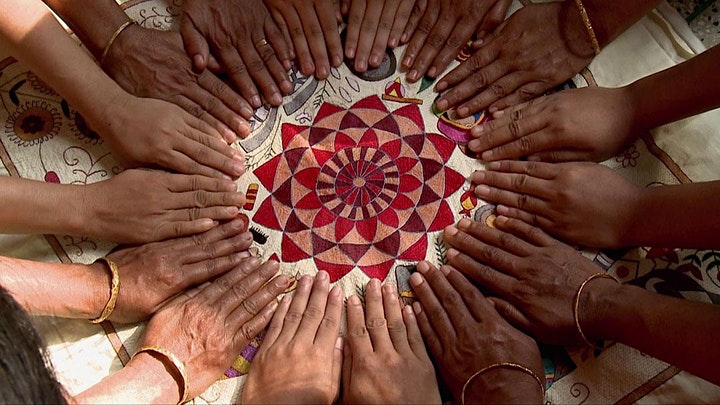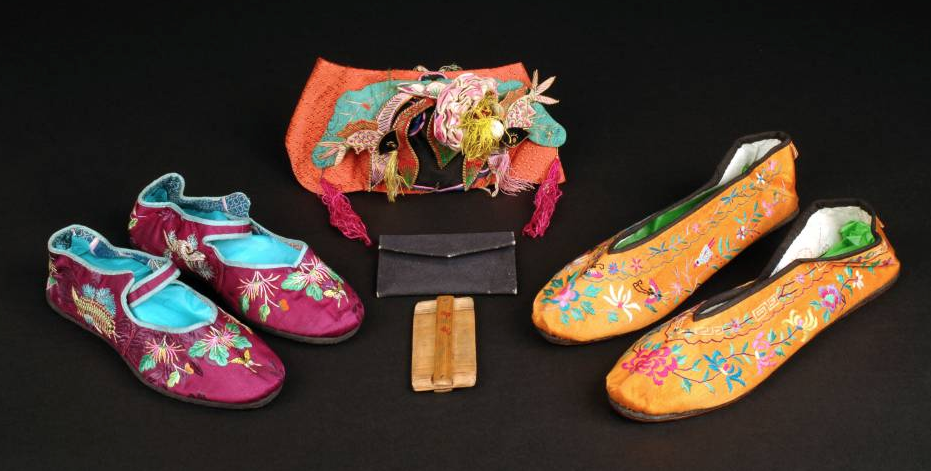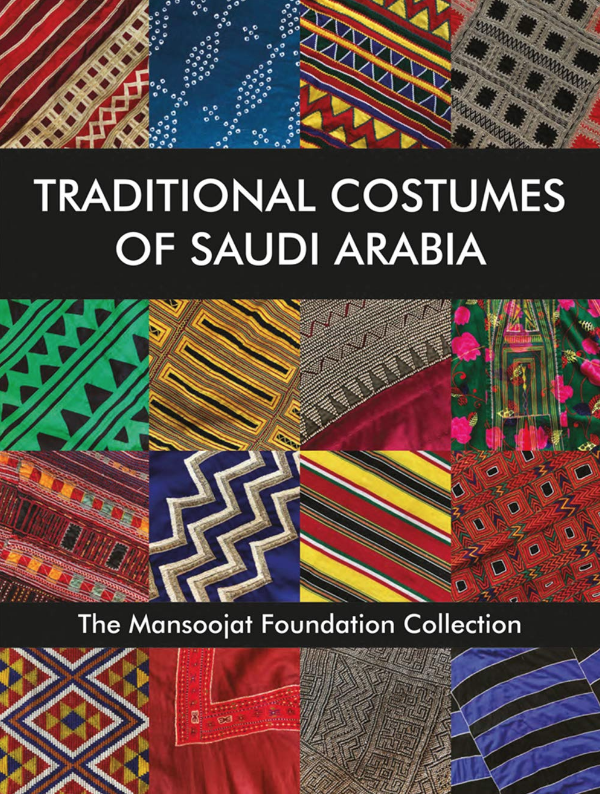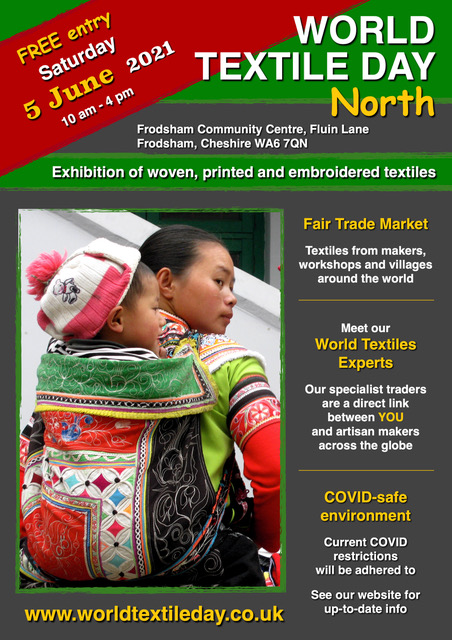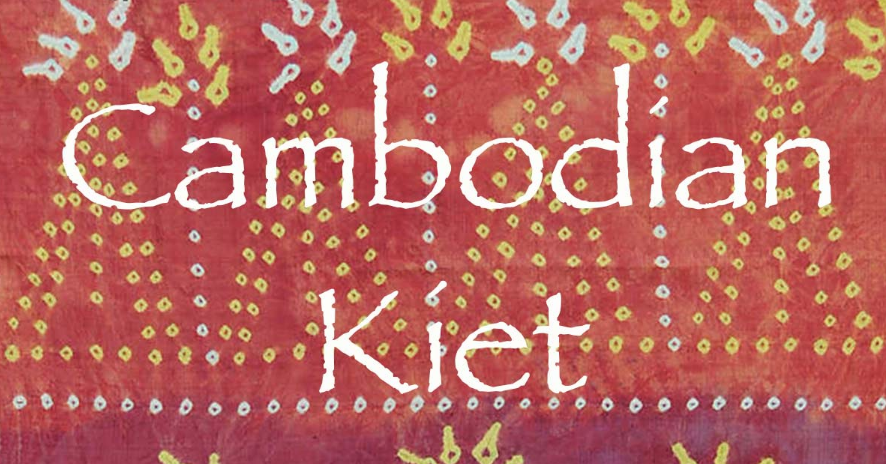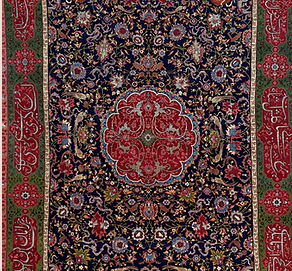
The first OATG event of the year was our AGM and Show and Tell, which was a great success. Some superb pieces were shown and a lively discussion ensued.

******************************
Our next OATG talk will take place this Thursday 26 January at 18:30 GMT. Our speaker is Rachel Peat and her subject is Connecting Threads: Japanese Textiles in the British Royal Collection.
Magnificent textile gifts have been a central ‘thread’ of courtly relations between Britain and Japan for centuries. From rolls of silk given to Queen Victoria in 1860, to an embroidered screen sent as a Coronation gift by the Emperor Meiji in 1902, this lecture will situate Japanese textiles within the broader history of diplomatic exchange. Alongside tapestries and embroideries, attention will be given to loyal addresses backed with silk brocade, long-lost kimono and the silk lacing on a seventeenth-century armour.
The talk will particularly explore how specific materials and motifs on Japan’s textiles have been used to convey bonds of friendship between the two Courts. Featuring unique photographs and first-hand convey from the Royal Archives, it will also shed light on how members of the British Royal Family enjoyed and displayed these works – from adorning the walls of royal residences, to wearing Japanese garments themselves.

Kawashima Orimono Co. Ltd, Embroidered folding screen with a scene from the Tale of Genji (detail), 1970–71. RCIN 29941. Royal Collection Trust / © King Charles III 2022
Rachel is Assistant Curator of Non-European Works of Art at Royal Collection Trust. Her role encompasses over 13,000 works of art from across the globe, which today furnish 13 current and historic royal residences. She is editor of Japan: Courts and Culture (2020), the first publication dedicated to Japanese material in the Royal Collection, and curator of the exhibition of the same name at The Queen’s Gallery, Buckingham Palace, open until 26 February 2023.
This Zoom talk will be free for OATG members, with a small fee (payable via PayPal) for non-members. Click here for more details and to register.
******************************
On Thursday 2 February 2023 Ruth Clifford has organised a free hybrid symposium on the subject Craft in Fashion. This is a hybrid event, taking place in person (in Liverpool, UK) and online. “The symposium will explore the role of slow craft processes in the global fashion industry, the place and importance of traditional craft skills, and the potential of craft ……. in challenging inequalities in the industry and tackling existing unsustainable practices.” Ruth Clifford
Speakers include Lokesh Ghai, a textile artist, researcher and educator based at UPES University, Dehradun, India; Justine Aldersey-Williams, textile artist and teacher, founder of the North West England Fibreshed and co-founder of the Homegrown Homespun project in Blackburn, Lancashire; Dr Seher Mirza, designer, weaver and postdoctoral researcher currently working on the Decolonising Fashion and Textiles project at London College of Fashion and Swati Bhartia, a fashion and textiles designer who has extensive experience working in craft and handloom development in India.
The session will begin at 16:00 GMT and last for two hours. To register to attend in person please click here. If you want to attend online then please click here instead.
The following week sees the opening of the linked exhibition Craft in Fashion: contemporary examples from rural India, which runs from 6-17 February 2023 at the Liverpool John Moores University.

******************************
The London Antique Rug & Textile Art Fair (LARTA) takes place at Battersea Park from 24-29 January 2023.
“The London Antique Rug & Textile Art Fair (LARTA) was launched in 2011 and is the UK’s leading annual fair dedicated to the appreciation of antique rug and textile art. Our specialist event brings together quality decorative pieces and interesting collectors’ items presented by some of the UK and Europe’s most dynamic and knowledgeable dealers.
Our aim is to promote this vibrant art form to a wide audience, and offer a tempting array of textiles and weavings for sale. The scope of our interest is broad, and includes weavings from the Far East, Central Asia, Persia, India, Turkey, the Caucasus as well as from Europe and Africa, and from all periods up to the early 20th century. Customers typically include collectors, interior decorators and designers, private buyers and international dealers.
The quality of the exhibitors at LARTA guarantees an event of high artistic significance and cultural merit. Many of our dealers exhibit regularly at important international antiques fairs and specialist symposiums. Several have written expert articles and books, travelled extensively to learn about the material culture and traditions of the weaving regions, and celebrated this extensive subject through exhibitions in their galleries.” LARTA website
A full list of exhibitors can be found here.

******************************
HALI have organised a series of special events in Italy – Florence, Milan, Turin and Genoa – from 5-11 February. These include talks and guided tours of museums and galleries. Registration is required to attend the events. The cost is £75 per person for HALI subscribers, £125 per person for non-HALI-subscribers and £40 per person for students.

******************************
On Thursday 9 February 2023 Frances Wood will be giving an online talk on Chinese Illustration and Printmaking in China. She will discuss the “fascinating history of Chinese illustration—from the invention of printing in the 7th century through to the development of the complex sets of woodblock printing we see today.
Early illustrations were mainly of Buddhist subjects but by the 10th century books of all types, from literature to technological manuals, were widely available: expensive editions were beautifully illustrated whilst cheap chapbooks flooded the other end of the market. Colour illustrations and prints appeared from the 12th century, made from complex sets of woodblocks, most notably the ‘New Year’ prints that decorated houses at that auspicious festival.” – Museum website.
Frances has worked for more than 30 years as Curator of the Chinese collections in the British Library. I think that many of these woodcuts may show people in the dress of that time. This talk is one of a series linked to the current exhibition at the Museum of East Asian Art in Bath entitled Revolution, Propaganda, Art: Printmaking in Modern China, which runs until 3 June 2023.
For more details and registration for this free online talk, which begins at 18:30 GMT, please click here.
The video below, created several years ago by Francis Gerard and Haiyao Zheng, should hopefully whet your appetite.
******************************
On Saturday 11 February 2023 the New England Rug Society will be hosting an online talk on Swedish textiles. This event is co-sponsored by the TMA/SC and the Textile Museum. This speaker is Gunnar Nilssen and his subject is Northern Delights: Swedish Textiles from 1680 to 1850.
“Certain textile techniques unique to rural communities in Sweden have a long history, and the best pieces stand comparison with the most celebrated traditional textile art elsewhere in Europe, including the best Flemish-weave and röllakan examples. Yet they remain little known outside their locality. In times past, the peasantry in Skåne, southern Sweden, devised and utilised five different textile techniques about which little has been written in English. In this program, Collector Gunnar Nilsson lets us into the secrets of munkabälte, dukagång, krabbasnår, upphämta and trensaflossa.” – Press release
This talk takes place at 18:00 GMT (10:00 PT, 13:00 ET), and you can register for it here.
